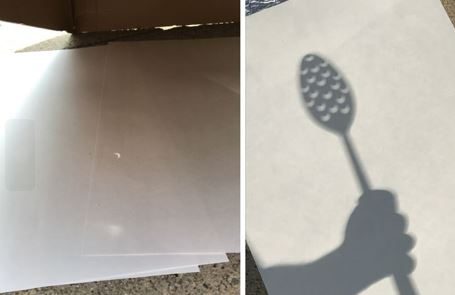
Safely projected images on the ground including one from a DIY pinhole camera in a
box and a pinhole camera slotted spoon. August 21, 2017. Photo credits: Emily Thompson
What: The upcoming 2024 solar eclipse is going to be one of the most anticipated events of the year. An astronomical event like this will not happen again until 2044. Here in Michigan we will be at 99% coverage, which sounds great, but you really want to see the eclipse at 100%. The sky will darken, birds will stop signing, and you might even be able to see some stars.
Where: For the best location, you might want to head towards the center of the path of totality. That is where the eclipse will last the longest and have the strongest effect. The closest area to us is Ohio, and here is a link to several Ohio state parks that are in this range as well as a link to some parks in Ohio that are hosting eclipse events!
The Problem: The eclipse is a once-in-a-lifetime event, but you can’t look at the sun directly or you risk retinal burn and loss of vision.
How to view: Do not look directly at the sun! For pinhole camera, project image to the ground to view them there!
Although “Solar Eclipse Safe” glasses are sold, only those with ISO 12312-2 certified filters will protect one’s retinas from the effects of viewing the Solar Eclipse directly. This certification means each pair has been individually tested to ensure safety of the viewers, however there are a number of retailers selling cardboard glasses which resemble these glasses, but which lack the certification that they can protect those wearing them.
To view the eclipse with objects you have around the house, JPL at NASA suggests making a pinhole camera. This can be done by lining up the light from the Sun through a colander or a hole pierced in a notecard or a piece of aluminum foil (pierce it with a safety pin) so that the light is projected through the hole onto the ground or a piece of white paper on the ground. This will allow you to see the waxing and waning light from the sun on either side of the eclipse without looking directly at the event. Remember, don’t look at the sun through the pinhole.
Tags: Sustainability
